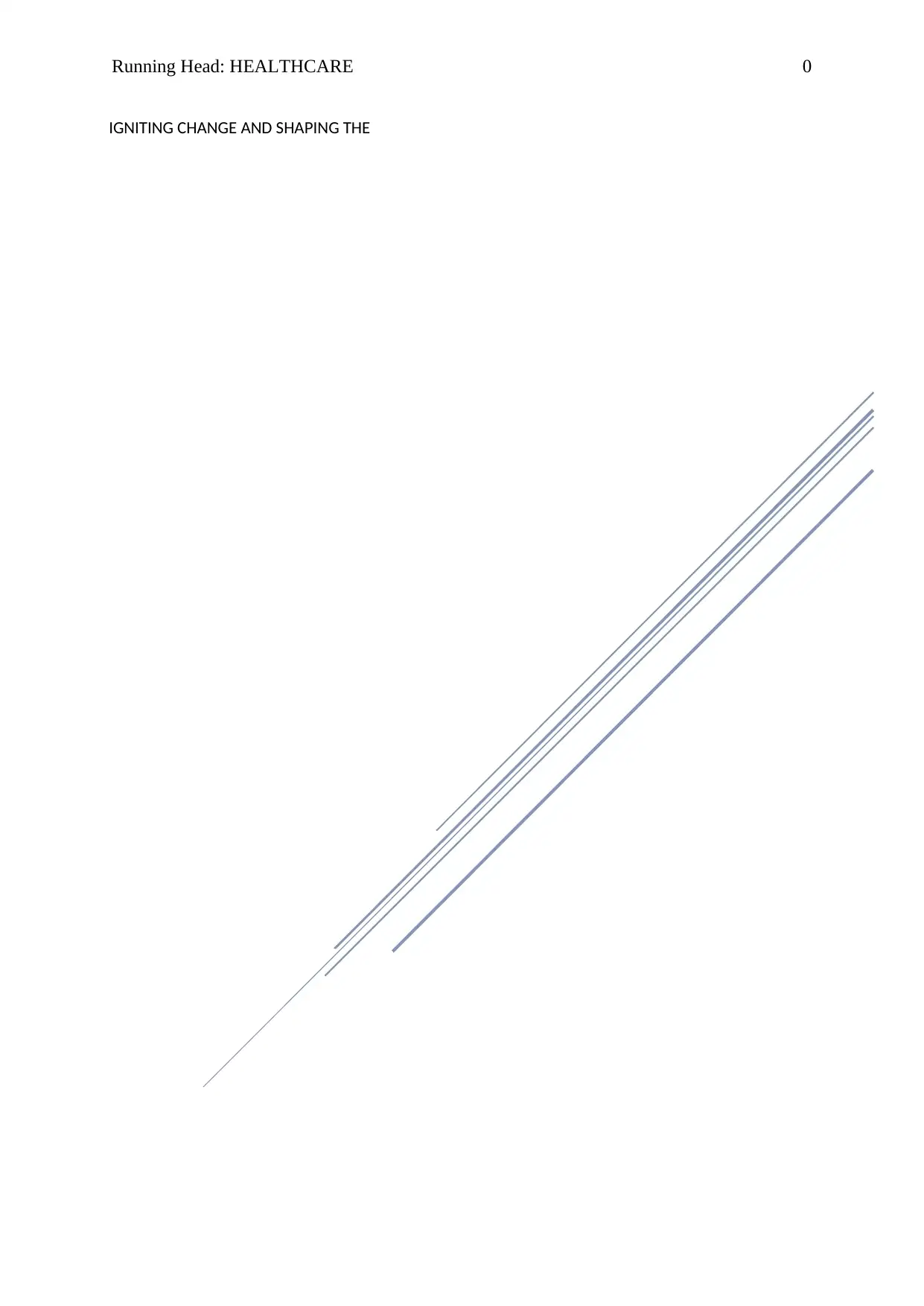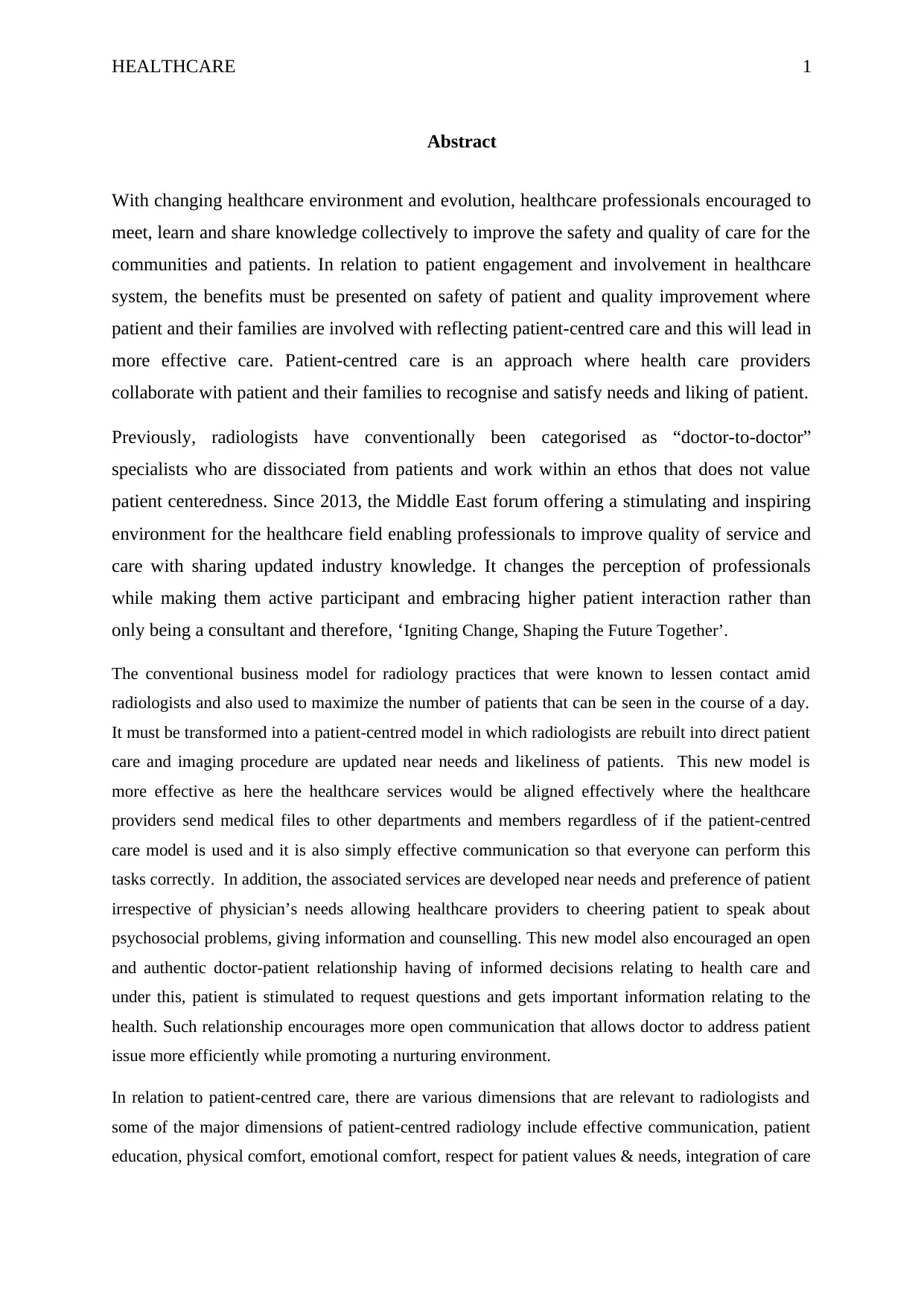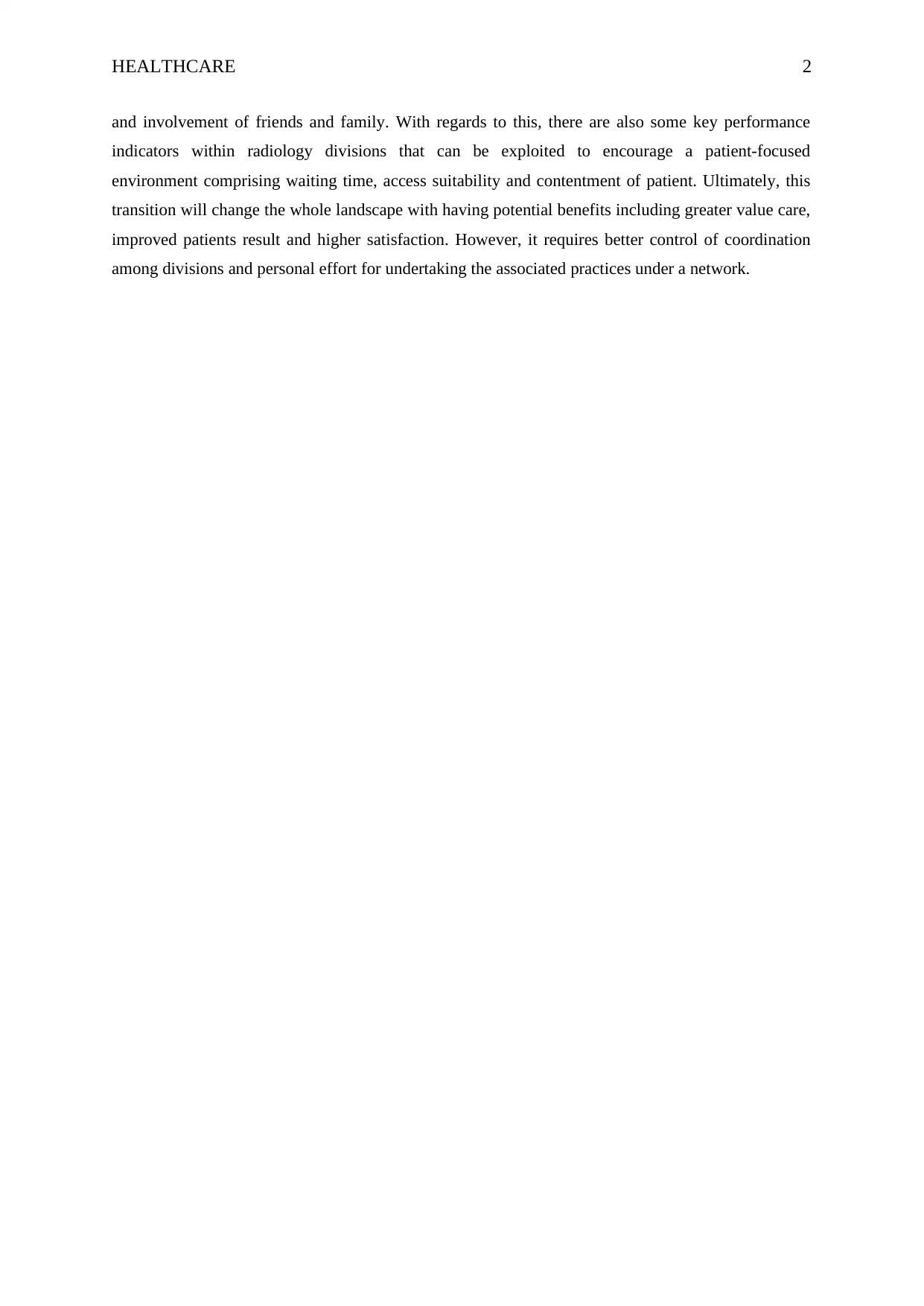Healthcare Abstract: Patient-Centered Radiology and Future Trends
VerifiedAdded on 2022/09/02
|3
|562
|19
Report
AI Summary
This healthcare abstract addresses the evolving landscape of radiology and the imperative shift towards patient-centered care. It emphasizes the need for healthcare professionals to collaborate, learn, and share knowledge to enhance patient safety and the quality of care. The abstract highlights the transition from a conventional, doctor-focused model to one that prioritizes patient engagement and involvement. Key aspects include effective communication, patient education, and emotional comfort within the radiology setting. The abstract points out the potential benefits of this patient-centered approach, such as improved patient outcomes, higher satisfaction, and greater value in care. The abstract also underscores the importance of key performance indicators, such as waiting times and patient satisfaction. The abstract references the Middle East forum as a driver for change and innovation in the field. The goal is to transform radiology practices, encouraging direct patient care and integrating patient preferences into imaging procedures. The abstract ultimately argues that this transition can change the whole landscape of healthcare.
1 out of 3










![[object Object]](/_next/static/media/star-bottom.7253800d.svg)